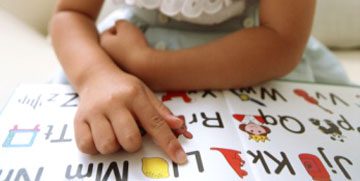Planning the Learning Environment
The role of the learning environment in fostering learning through children’s play cannot be overstressed. For the preschool environment to be stimulating, conscious efforts must be made to organize the daily programme routines and transitions.
The atmosphere of the early childhood programme must be conducive to learning and healthy overall development.
This article shall be devoted to a discussion on planning the environment for the overall development of the preschool child.
Accordingly, it shall highlight some aspects relating to the general atmosphere, arranging space, materials, equipment and furniture, and outdoor space.
General Atmosphere

The atmosphere of the early childhood program must be conducive to learning and healthy, overall development.
The teacher must ensure that the center provides a pleasant and relaxed surrounding where the children are comfortable and free to move around, explore and experiment.
The staff member is a surrogate parent to the children for the period that they spend at the center. Thus, she must show love, nurture, and provide the warmth and care essential to building up a feeling of trust in children. Children will always learn more when they feel loved, wanted, and secure.
At this stage, children are very curious and are always asking the question “WHY”? The staff member must not show impatience, anger, or irritability when faced with innumerable questions, but should listen carefully and with interest.
She should answer questions as honestly as possible simply, keeping in mind the developmental level of children and avoiding long-winded explanations, which could be confusing.
Read Also: How to Understand and Purchase Toys according to the Age of your Kids
The atmosphere at the center should be encouraging. No child should be ridiculed or shamed. Constant emotional reinforcement must be provided, e.g. give praise, a pat on the head, a hug; commend an action.
The centre should look bright and colorful. One of the best ways to achieve this effect is by displaying the children’s art and craftwork. This makes the children feel proud of their achievements.
Pl0Posters, chats, blow-ups of pictures, of animals, etc.; mobiles, chimes, make the room look cheerful. All items mounted in display areas or on bulletin boards, should be hung at the child’s eye level.
Indoor Space
There are various ways to plan and organize a centre depending on the space and resources available, but in all cases, the following basic points should be considered:
The planning of indoor space must be done in a manner that fully utilizes available space but does not overcrowd or restrict the children’s movements. Local minimum standards for building and space usage should be observed.
In the infants’ room, the cots, cradles, or mats must be arranged near the wall, leaving the centre of the room available for play, and allowing the crawlers enough room to move around without obstructions.
The rooms for the toddlers and older children should be divided into areas for specific activities to ensure some kind of order to the room and limit chaos.
The main activity areas are Housekeeping, Library, Art, Blocks, Puzzles, and Table Games, Music. Additional areas are Science and Carpentry.
In addition to activity areas, a place should be created for sleep or nap time. The day is long and tiring and the children will require sleep after lunch. If there is not enough space for a separate area, then one of the activity corners can be used.
Read Also: Sid the Science Kid Series: Why Kids love to Watch it on PBS
Materials, Equipment, and Furniture
The materials used should be simple and versatile. They should be sturdy enough to withstand the wear and tear of the children’s handling. Materials for various learning centres can be kept in labeled boxes which can be transported easily outdoors.
Expensive materials are unnecessary because children are just as happy playing with simple “homemade” objects or natural objects in their environment. It is the staff’s responsibility to exploit the local resources available to prepare materials for the centre.
The basic equipment needs of a centre will vary on the size of the place and number of children in attendance. Avoid equipment with sharp edges.
Furniture should be sturdy but of weight and size suitable for children. Each child should have a place for his/her personal belongings, private treasures, etc., to develop a concept of self-identity.
Cardboard boxes, shelves, tins, etc., can be used. Paste the child’s name and a picture on the container so that he/she will gradually come to identify the spelling of his/her name.
Outdoor Space
It is essential to have an outdoor play area on the grounds of the centre, so that the children can be out in the fresh air for some part of the day exercising their large muscles and in close contact with nature.
If there is no yard space, locate a play park or open space close to the centre.
Arranging Space
A part of the outdoor area must have shade. Trees are ideal, but if this is not possible, other kinds of covering can be used.
Read Also: Play as a Learning Method: Characteristics and Essence of Play
It should be enclosed by a fence or walls to prevent the children from wandering off into dangerous areas.
Grassy areas can be used for games (to roll on, etc.) The ground beneath all climbing equipment, swings, slides, etc., should be protected by sand, grass, or leaves.
Provision for outdoor sand play and water play is vital in any centre. A water pool could be built or a large wash tub full of water could be placed outside.
A small area should be utilized for gardening. Children could plant, water, and weed the flowers and vegetables. If the area is large enough, small plots can be assigned to each child or group.
Small pets like guinea pigs, rabbits, and birds, could be kept, to provide another valuable experience for the children. It is not advisable to keep turtles, rats, or other animals that could pose health hazards.
In summary, it therefore becomes necessary for the teacher to plan and arrange the preschool environment in a way that enhances learning and healthy overall development.
The atmosphere of the early childhood program must be conducive to learning.
The ways to plan and organize a centre depend basically on the space and resources available.
The materials used should be simple but sturdy. It is essential to have an outdoor play area on the grounds of the centre.
Read Also: Learning and Teaching Model for Children
Read Also: Play: The Montessori Method in Teaching and Learning



